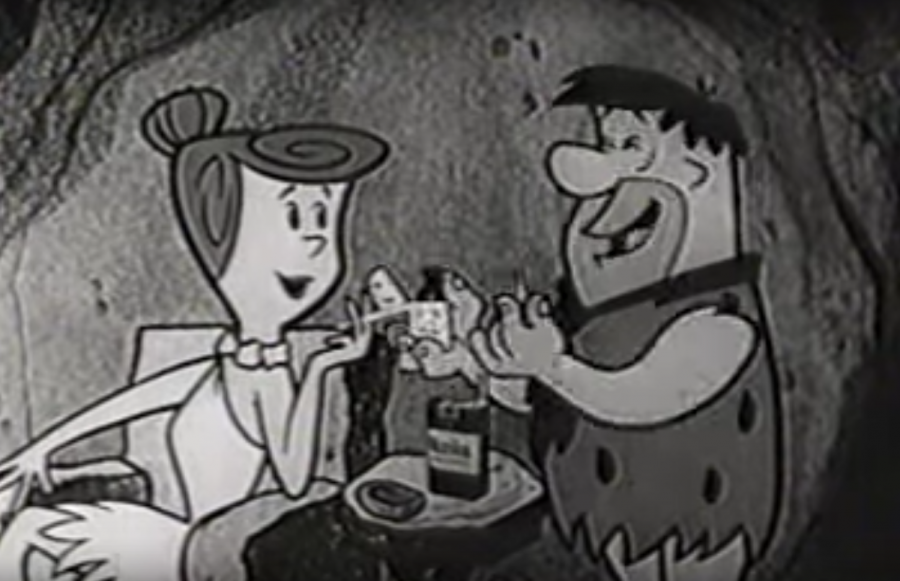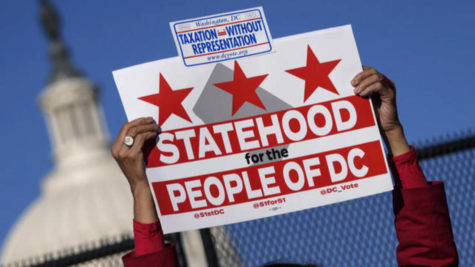OPINION: Today’s vapers will become tomorrow’s smokers
The United States seeks to eliminate teen smoking, but is raising the minimum age to buy tobacco the way to do it?
The Flintstones sharing a cigarette serves as a staple of a bygone time where smoking was commonplace.
As of last December, nineteen states elected to raise the minimum age to buy tobacco and tobacco-related products (which includes e-cigarettes and vaping products) to 21, and this comes into effect in Pennsylvania on July 1st, on which newly legal adults will no longer be able to buy such products.
This legislature change will only lead to an increase in teenage smokers.
In 1976, 28.8% of senior students reported smoking daily, and this number is now at an all time low since then at 3.6% of high school seniors. The significant drop can be thanked to a cultural shift, being as the 60s had nicotine marketing in such media as The Flintstones, whereas modern cable television is very much marked by vigorous anti-smoking campaigns thanks to efforts from the American Cancer Society, CDC, and many other groups.
Smoking is no longer the norm in general, the CDC reported in 2015 that the number of American smokers went down 20.9% from the decade prior, lowering the percentage to 15.1% of adults in the U.S. This is extraordinary progress, and the campaigns are only encouraging more and more smokers to quit.
We are at a point in American culture where the question is no longer whether we can convince people not to smoke, but rather how we can get those remaining to quit.
However, whereas progress for American adults is steadily improving, teenagers face an uncertain path with the banning of tobacco sales for those under 21. This seems contradictory, but the greatest demand for alcohol in history came with the prohibition of it — it is unarguable that forbidden products are adamantly desired.
While teenage smoking is at an all time low, the number of teens that vape is only exponentially increasing. An estimated 5 million teens use e-cigarettes, and nearly a million use them daily. It is uncommon to vape without nicotine, and nicotine is an incredibly addictive chemical which is the same cause of the addiction for many smokers. However, vaping is significantly less harmful than smoking, due to the lack of tar, arsenic, ammonia, and various other toxins that poison smokers, and even bystanders due to the effect of secondhand smoke. Thus, vaping is not only safer for the user, but those around them as well.
So cigarettes are more harmful, but are losing popularity and their widespread usage. It may seem to balance itself out, but the ban of tobacco to those under 21 will upset the balance.
Cigarettes have been sold for decades, and accessing them is vastly easier than acquiring the much more niche vape pen. Cigarettes are supplied at gas stations and convenience stores, and are a common commodity. Vape products are sold at shops designated for vaping products, and the way so many teens get theirs is from buying what their friends can manage to get. When these same teens can no longer vape, they’ll look for their nicotine kick in other ways — the simplest of which is stealing cigarettes from parents, uncles and aunts, or simply finding a guy to buy them off of.
The shifting of the minimum age to buy tobacco may seem to make sense and coincide with the minimum age for alcohol consumption, but frankly, most of the first world has their age at 18 in the first place. 18 is considered adulthood, and the government fails to find the nonsensical reasoning in allowing these 18 year olds to die for their country yet will refuse to serve them alcoholic beverages.
The shift of the minimum age to buy tobacco will not only increase the number of teen smokers — it is also inherently irrational.

Blaze Myers is a graduate of BASH. His senior year was his first year in the CUB, previously only collaborating. He was in several leadership positions,...






















